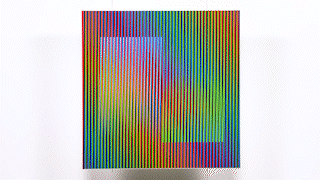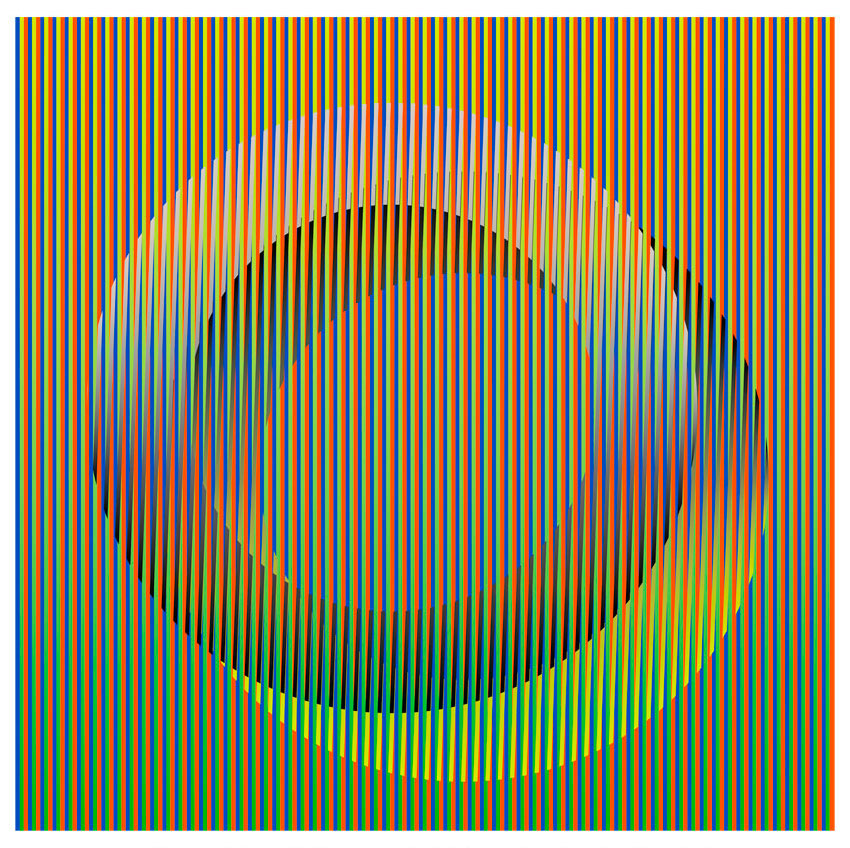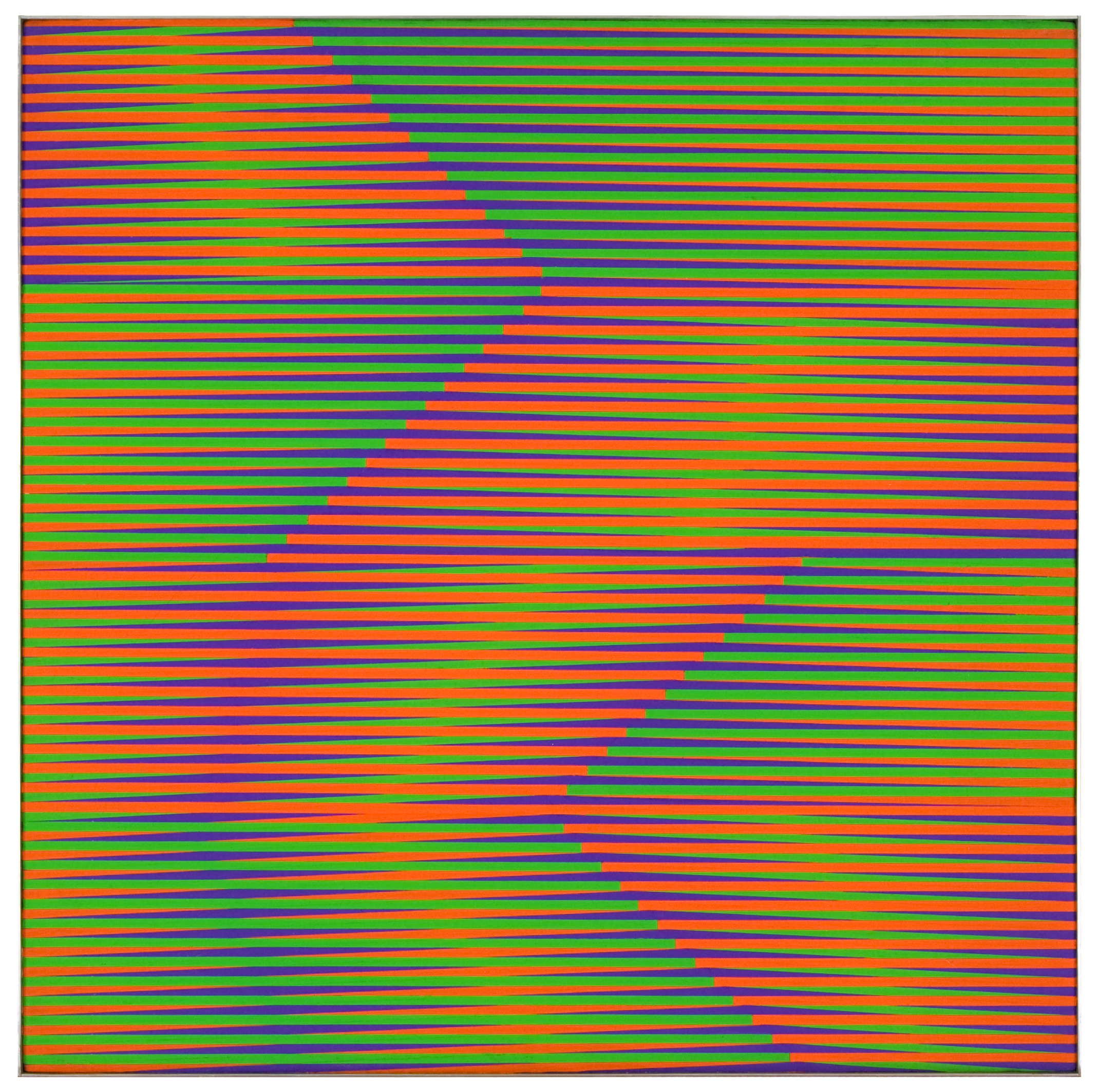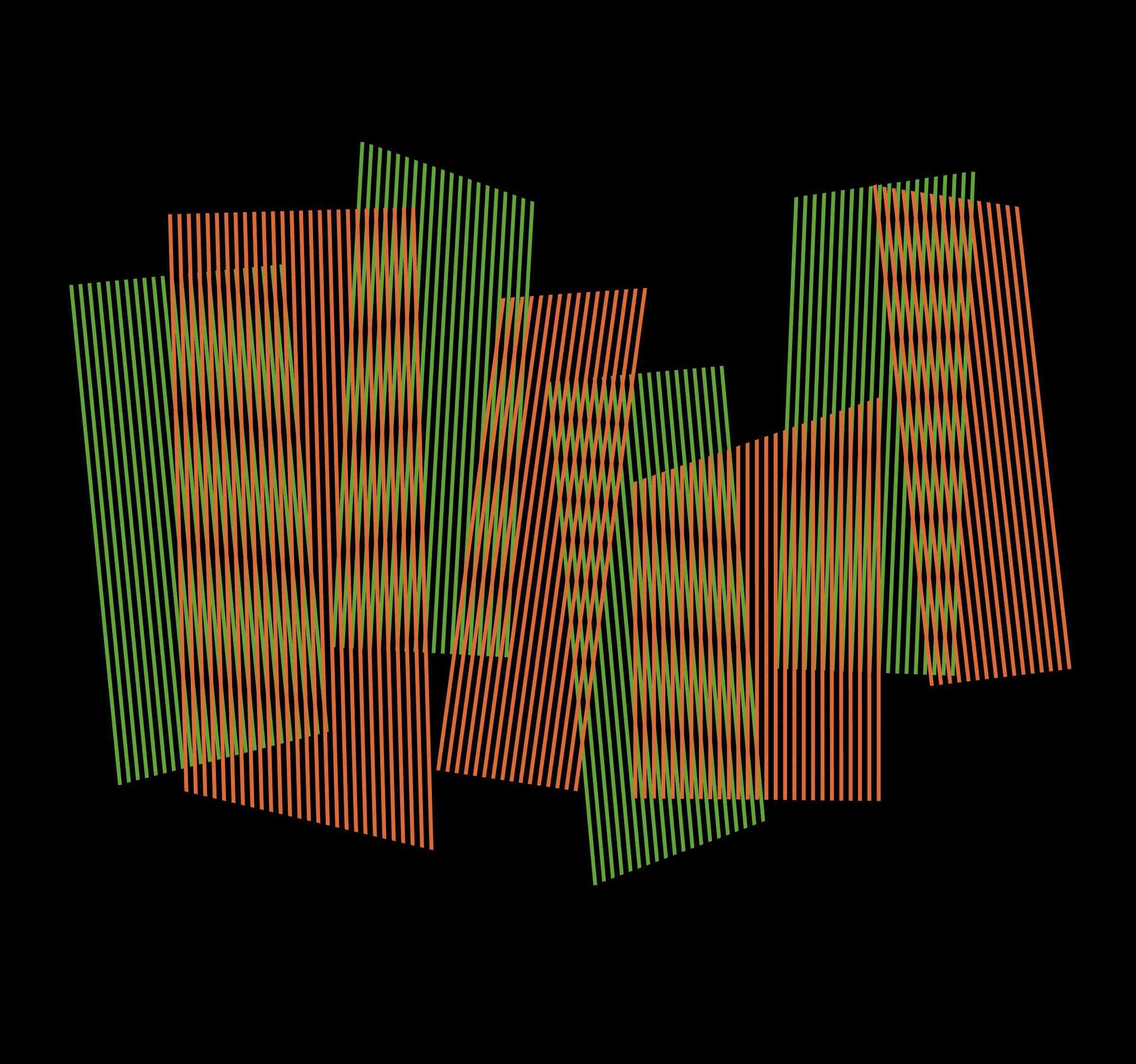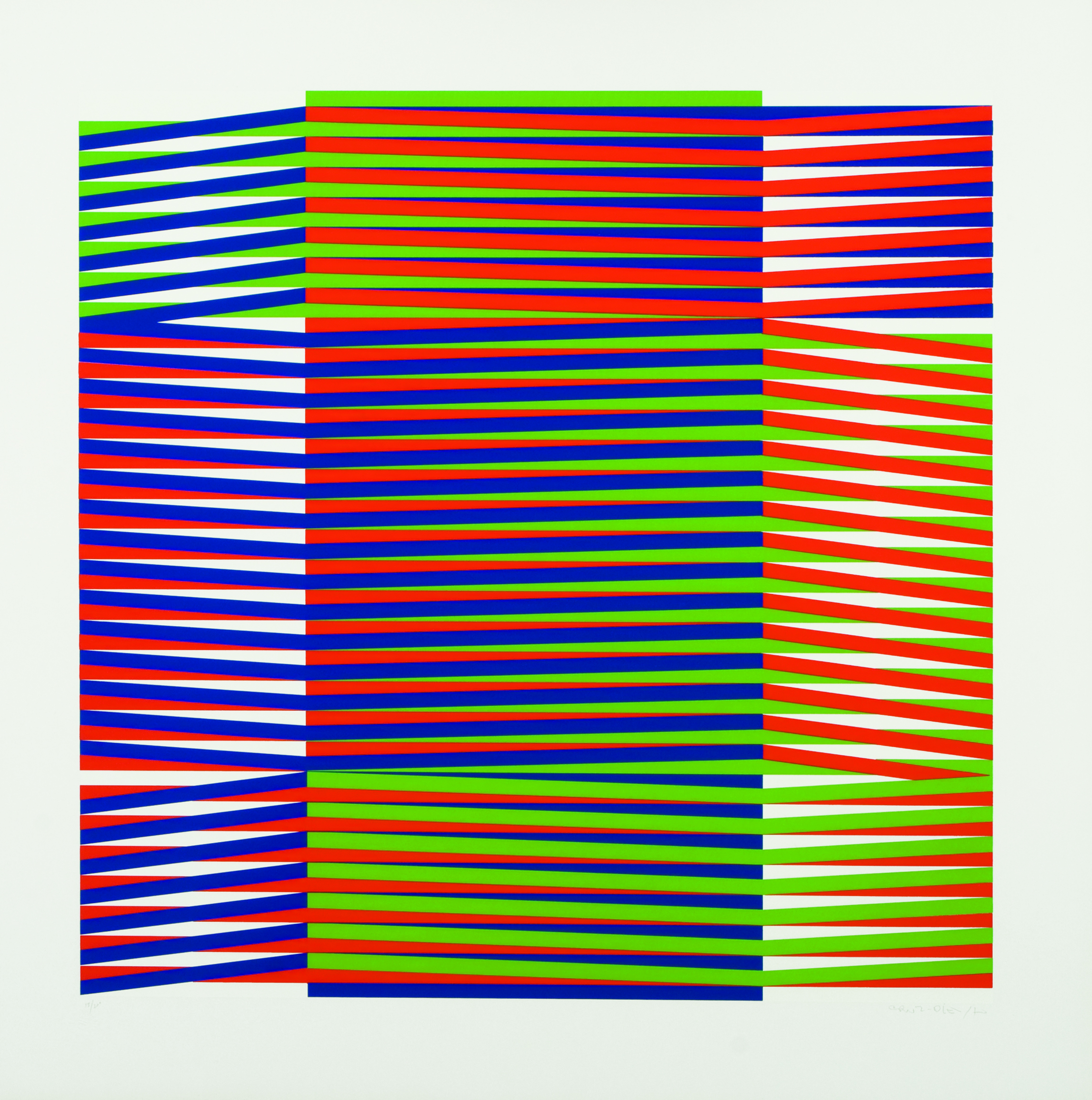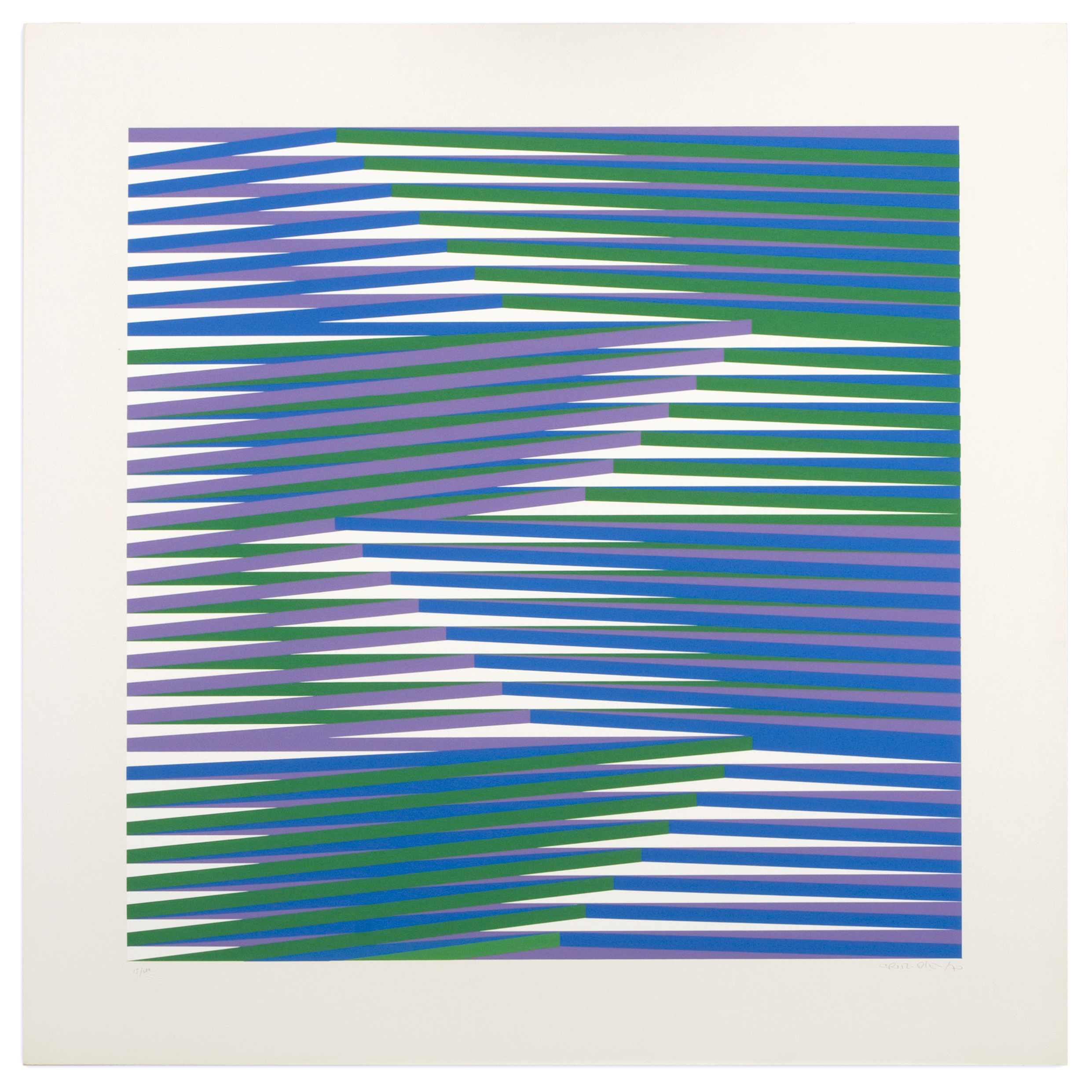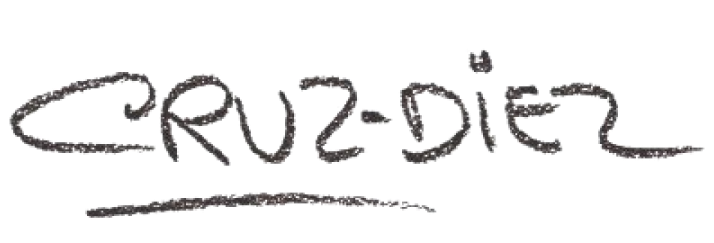
The Couleur Additive series (1959) is based on the radiation of color. When one plane of color touches another, a darker vertical line appears at the point of contact. This virtual line in fact contributes a third color that is not in the support. By isolating this optical phenomenon, Cruz-Diez obtains the so-called “Chromatic Event Modules” responsible, in a way, of the continual transformation of color.
Jaune Additif
The first work of the series Couleur Additive was the Jaune Additif, which arose from the studies that Cruz-Diez started in 1953 on the theories and polemics between Isaac Newton (1642–1727) and Johann Goethe (1749–1832). He also studied those of James Maxwell (1831–1879), Eugène Chevreul (1786–1889), Josef Albers (1888–1976) and Johannes Itten (1888–1967). In addition, he reviewed the experiences of James Maxwell (1831–1879) and his definition of light, and Louis Ducos de Hauron (1837–1920) and his subtractive theory. However, it was the experiences of Edwin Land (1909–1991), inventor of the Polaroid camera, which impressed him the most.
Imagine a Bonnard in space. The colors detach themselves from the background and come to the foreground of the picture - then, and this is the important thing - they are constantly recreated, revitalized by the intensity and the force of the luminous setting.
Christine Duparc – Le Nouvel Observateur, edition of April 21, 1969
